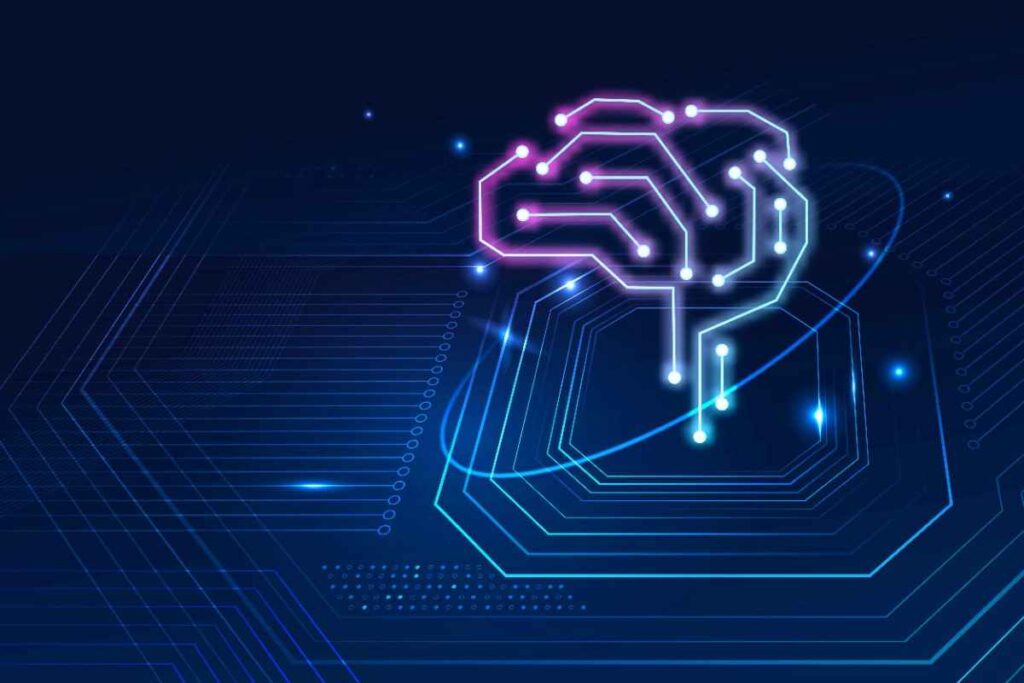In recent years, image style transfer has become one of the most fascinating applications of artificial intelligence in the field of visual arts. It allows for the transformation of a digital image’s style—be it painting-like textures, brushstroke patterns, or artistic filters—while retaining the image’s original content. From mimicking Van Gogh’s starry night style to giving photographs a watercolor effect, style transfer has captured both technical and artistic communities’ attention.
The ability to train custom models for this task has opened new doors for developers, artists, and organizations who seek personalized and brand-specific outputs. This blog will explore the key concepts, methodologies, tools, and best practices for training custom AI models for image style transfer, offering a step-by-step guide and insights into this transformative AI technique.
What is Image Style Transfer?
Image style transfer is a deep learning technique that combines the content of one image with the style of another. The concept gained widespread popularity following a paper by Gatys et al. in 2015, which demonstrated that convolutional neural networks (CNNs) could separate and recombine the content and style of images.
-
Content Image: The image whose structure and elements you want to preserve.
-
Style Image: The image whose artistic characteristics you want to apply.
The result is a blended image that looks like the content image painted in the style of the style image.
The Importance of Custom Training
While pre-trained models are accessible and provide impressive results, they are typically trained on general datasets with limited stylistic diversity. Custom training offers the following benefits:
-
Personalization: Tailor outputs to specific brand aesthetics or artistic preferences.
-
Improved Accuracy: Reduce errors and improve stylization quality for niche domains.
-
Control: Fine-tune layers, loss functions, and data pipelines for superior outcomes.
Custom models are particularly useful in industries like fashion, entertainment, marketing, and art restoration where unique visual outputs are critical.
Core Components of Style Transfer Models
Understanding the basic architecture is essential before diving into custom training. Most style transfer models involve the following:
1. Convolutional Neural Networks (CNNs)
CNNs are at the heart of style transfer algorithms. They are responsible for extracting features such as edges, textures, and colors from both the content and style images.
2. Loss Functions
Three primary types of losses guide the training process:
-
Content Loss: Measures how much the content image deviates from the original.
-
Style Loss: Captures the stylistic difference using Gram matrices of feature maps.
-
Total Variation Loss: Encourages spatial smoothness to reduce noise.
3. Optimization Algorithms
Gradient descent or its variants like Adam are commonly used to minimize the combined loss function during training.
Popular Approaches to Style Transfer
There are several approaches used for training style transfer models. Each has its own advantages depending on the task:
1. Neural Style Transfer (NST)
This method optimizes an input image to match the style and content loss, typically using a pre-trained CNN like VGG-19. It is computationally expensive and works best for high-quality, static image generation.
2. Perceptual Loss Models
Introduced by Johnson et al., these models use perceptual loss functions based on high-level feature maps and allow for real-time style transfer. They are ideal for applications that require speed and efficiency.
3. GAN-based Approaches
Generative Adversarial Networks (GANs) can also be employed for style transfer. Models like CycleGAN and StyleGAN are capable of learning complex style mappings without paired training data.
Preparing the Dataset
Custom training begins with preparing a curated dataset. This is often the most time-consuming but critical step in the entire pipeline.
1. Content Images
These should be varied and representative of the scenes you want to transform. Resolution, diversity, and realism matter significantly.
2. Style Images
Choose style images based on the visual aesthetics you wish to learn. You can collect images from specific artists, eras, or even custom digital artwork.
3. Preprocessing
-
Resize all images to a consistent resolution.
-
Normalize pixel values (usually between 0 and 1).
-
Augment datasets to increase diversity and robustness (rotations, flips, etc.).
Building and Training the Model
Let’s break down the training workflow:
Step 1: Model Architecture
Select or design an architecture based on your objective. A common choice is to use VGG-19 as a feature extractor and a custom transformer network for style rendering.
Step 2: Defining Loss Functions
Combine style, content, and variation losses. It’s often effective to weigh style loss more heavily if stylization is your priority.
Step 3: Training Setup
-
Batch Size: Typically small (e.g., 4–8) due to GPU memory constraints.
-
Learning Rate: Start with 1e-3 and adjust using a scheduler.
-
Epochs: 2,000–10,000 iterations depending on dataset size.
Step 4: Training Loop
Train using backpropagation. Monitor losses and outputs regularly to avoid overfitting or under-stylization.
Evaluating the Model
Once trained, evaluate the model both quantitatively and qualitatively.
1. Visual Inspection
Compare results against ground truth (if available) or subjective artistic goals.
2. SSIM and PSNR
Use metrics like Structural Similarity Index (SSIM) and Peak Signal-to-Noise Ratio (PSNR) for assessing image quality.
3. User Feedback
If the model is being deployed in a product, gather user feedback to inform further tuning.
Fine-Tuning and Model Optimization
After the initial training, additional steps can further improve performance:
1. Pruning
Remove unnecessary neurons or layers to reduce model size.
2. Quantization
Convert floating-point weights to lower precision to optimize for mobile and edge devices.
3. Knowledge Distillation
Train a smaller model to replicate the behavior of a larger, more complex one.
Deployment Considerations
Deploying a style transfer model in production requires careful planning:
1. Infrastructure
Choose a robust environment—whether it’s cloud-based or on-premise—for hosting the model.
2. API Integration
Wrap the model in a RESTful API for easy integration with web and mobile applications.
3. Latency and Throughput
Use asynchronous queues or GPU acceleration to handle real-time requests.
One notable AI development company in NYC has demonstrated success by integrating style transfer models into branding platforms, allowing marketers to instantly generate campaign visuals in specific artistic styles.
Ethical Considerations
As with all AI applications, ethical issues should be taken seriously:
-
Copyright Infringement: Ensure that style images used are licensed or in the public domain.
-
Bias and Representation: Avoid unintentional skew by ensuring dataset diversity.
-
Transparency: Inform users when content has been AI-generated or altered.
Real-World Applications of Custom Style Transfer
Custom style transfer has applications across various industries:
1. Entertainment and Media
Film studios use style transfer to create stylized sequences and special effects.
2. E-commerce and Fashion
Retailers apply style transfer to product imagery for seasonal or promotional themes.
3. Education and e-Learning
Educational platforms use stylized visuals to enhance visual learning and engagement.
4. Digital Marketing
Brands use stylized imagery to maintain a cohesive visual identity across campaigns.
Challenges in Custom Model Training
Despite its advantages, training custom models poses challenges:
-
High Resource Requirements: Training requires GPUs and large datasets.
-
Hyperparameter Tuning: Selecting the right combination of parameters is complex.
-
Generalization Issues: Custom models may perform poorly on unseen data.
Strategies such as transfer learning, data augmentation, and regularization can help address these issues.
Future of Image Style Transfer
As AI continues to evolve, the future of style transfer holds exciting possibilities:
-
Real-Time Video Stylization: Improved latency will allow for real-time artistic video filters.
-
Cross-Modal Transfer: Applying the style of a musical composition or piece of literature to visual art.
-
Interactive Stylization: Tools that let users dynamically adjust style elements during generation.
The integration of multimodal models and reinforcement learning could lead to more intelligent and context-aware stylization engines.
Conclusion
Training custom AI models for image style transfer provides a unique opportunity to blend technology and creativity. With the right tools, datasets, and understanding, businesses and individuals can unlock a powerful form of digital expression. As the technology matures, we can expect even more innovative applications that redefine the boundaries of visual communication and design.
By embracing custom model development, creators can maintain a distinctive aesthetic, engage audiences more deeply, and stay ahead in a competitive digital landscape.
- How Custom AI Models Are Trained for Effective Image Style Transfer
- This blog will explore the key concepts, methodologies, tools, and best practices for training custom AI models for image style transfer, offering a step-by-step guide and insights into this transformative AI technique.
- ai models, ai image generation
Related posts:
 Can Generative AI Truly Replace Human Creativity in the Future?
Can Generative AI Truly Replace Human Creativity in the Future?
 Blurring Boundaries: How AI is Reshaping the Future of Digital Art?
Blurring Boundaries: How AI is Reshaping the Future of Digital Art?
 Smart Contracts 2.0: The Next Evolution in Blockchain Technology
Smart Contracts 2.0: The Next Evolution in Blockchain Technology
 Exploring Coderway.net: A Modern Gateway to AI-Powered Image Creation
Exploring Coderway.net: A Modern Gateway to AI-Powered Image Creation
 The Future of AI in Business: Predictions for 2025 and Beyond
The Future of AI in Business: Predictions for 2025 and Beyond
 Understanding AI Inference as a Service: How It Powers Smart Applications
Understanding AI Inference as a Service: How It Powers Smart Applications
 The Role of AI Model Libraries and Vector Databases in Modern AI Deployment
The Role of AI Model Libraries and Vector Databases in Modern AI Deployment
 Revolutionizing App Development in Dubai with AI-Powered Custom Solutions
Revolutionizing App Development in Dubai with AI-Powered Custom Solutions







